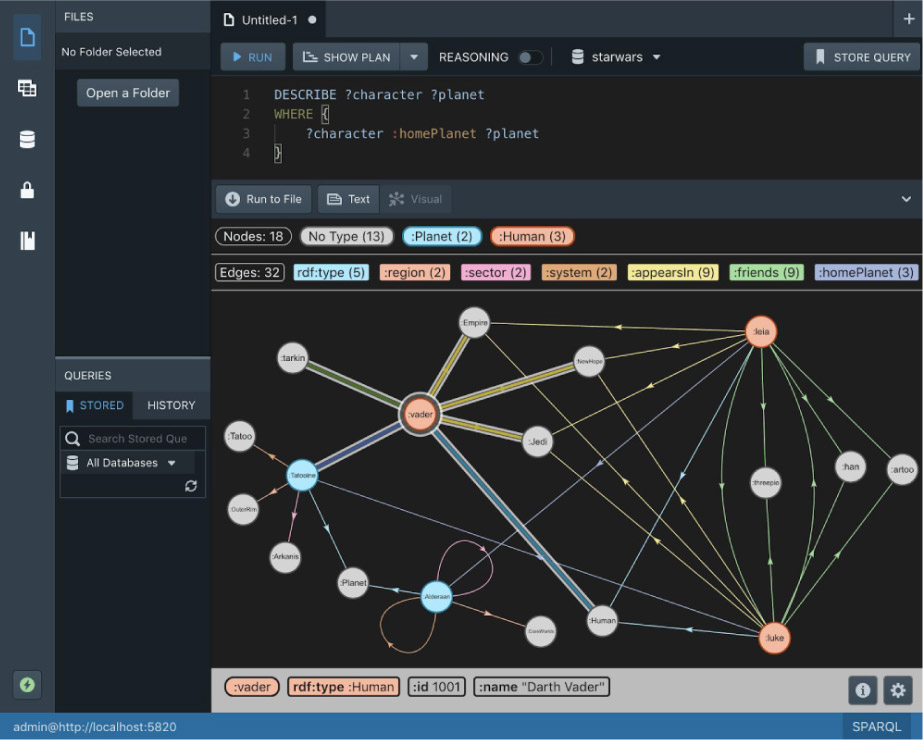Stardog’s platform is based on semantic graph standards that infuse meaning into your data, creating a connected network of knowledge to power your business. This is critical because an enterprise may support hundreds of applications, each with its own data model. Connecting data models across applications typically requires custom code to map data across these different sources. Thanks to the open standards that Stardog supports, now these applications can work together with a common data model, while underlying data sources retain local control.
These open standards were created by the W3C standards body, the same group that created the Web (with some help from our founders). The standards include a graph data model, reasoning capabilities, as well as query, constraint, mapping, and rules languages.
What do these standards look like in practice? With Stardog, customers can translate the different data dialects embedded in legacy systems into the standard language of RDF. Related terms are linked together without changing the underlying data. Each data object is assigned a unique ID, to which all related information is linked. This allows data owners to maintain control while providing shared access through the unique ID. Legacy systems are left fully intact. The flexible data model can easily accept new data sources and accommodate multiple definitions to serve different applications.
A community of practice has developed around these standards, with many public data models (called ontologies) available on the market to accelerate Knowledge Graph development. These data models describe relationships between entities and are able to capture complex relationships, including hierarchical, situational, or changing relationships.
A public ontology may account for about 80% of modeling required for your Knowledge Graph, with the remaining 20% customized based on your proprietary data or unique internal operations. Stardog has the fullest support for the W3C reasoning standards, making it possible for users to encode more expressivity in their models.
Of course, there are some areas where we have to go beyond the standards to improve Knowledge Graph utility, scalability, and performance. Our unique path queries find connections in the graph, our built-in machine learning runs across the breadth of your unified data, and our virtualization supports enterprise-grade scalability. Finally, we provide tooling to make your work easier, from our Studio IDE to our support of additional query languages such as GraphQL.
-
IN PRACTICE
Ericsson used Stardog and the W3C technology the platform is built on to create a fully interoperable supply chain platform offering secure data-sharing that doesn’t disrupt the existing technology investments of its participants.

Get started with Stardog now
Start building your Enterprise Knowledge Graph today. Get your 30-day fully featured Trial.
Start today

